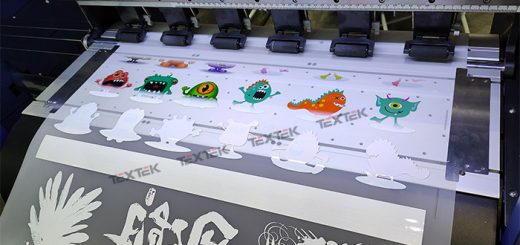How does Dye Sublimation Printing Work?
What is dye-sublimation printing?
You may print photos of photo-lab quality at home using dye-sublimation printers. More and more owners of digital cameras are choosing to use this technology as the cost of these printers decreases. In contrast to inkjet printers, dye-sublimation printing does not lay down color in the form of individual dots. Digital images appear less lifelike because individual dots may be seen up close and personal.
A long roll of translucent film that resembles sheets of cellophane in the colors of red, blue, yellow, and gray taped end to end can be found within a dye-sublimation printer. Solid dyes that correspond to the four primary printing colors of cyan, magenta, yellow, and black are incorporated into this film. As the print head moves over the film, it warms up, which causes the dyes to evaporate and infiltrate the glossy paper surface before they solidify again.
Therefore, heat is the primary distinction between this method of printing and others. Instead of the obvious barrier between dye and paper created by inkjet printers, the vaporized colors saturate the surface of the paper, providing a gradual gradation at the margins of each pixel. Additionally, the paper is less prone to fading and distortion over time because the color permeates the material.
How does sublimation work?
The process of dye sublimation printing is quite easy, and the outcomes are excellent. Therefore, the actions you should take to get started with this personalization process are as follows:
- Pick an image from your computer; you can tweak it using graphic design tools, or you can just use it as is.
- Nowadays, there are several options for free graphic editing tools.
- Print the image using an inkjet printer using sublimation-specific inks and paper. You should be informed that your sublimation printer needs to be exclusively used for this process. Since you will need to properly clean the ink tubes of a previously used printer (using conventional inks), we do not advise doing so.
- Put the printed side of the paper against the surface of the things you wish to personalize. If you are decorating a cup, place the paper’s printed side against the surface and fix it in place using heat-resistant tape.
- Place the object on the heat press along with the printed paper after adjusting the temperature, pressure, and time settings. To apply heat, close the press; this is when SUBLIMATION occurs. Heat activates the ink, causing it to instantly change states from solid to gas and merge into the surface of the object.
- Carefully take the item out of the heat press once the designated amount of time has passed. Because the press can get very hot, we advise wearing protective gloves. Carefully remove the paper. The printout is now prepared.
What Materials Can Be Sublimated?
Although dye sublimation is a very efficient printing method that produces expert-level graphics, there are several qualities that it cannot be used with.
It is crucial to highlight that polyester or fabric coated with polyester should be used when dye sublimation is being used. The field is left open for other non-fabric alternatives, such as trade show displays, tiles, and athletic products, despite the fact that this can be restrictive in terms of the kind of fabrics that can be applied.
The other well-known printing techniques, heat transferring and screen printing, cannot be used to print on these materials.
Textek is a reputable manufacturer with unmatched experience in selling high quality DTF printers. At Textek we have three models of DTF printers to choose from A3 DTF Printer, A3 Pro DTF Printer, 60cm DTF Printer with white ink recirculation system, original Epson print head, automatic paper feeding and winding system, and automatic powder shaking device to prevent all the problems we mentioned earlier. By greatly reducing our manual operation and maintenance, you can focus on getting the best possible print results.







